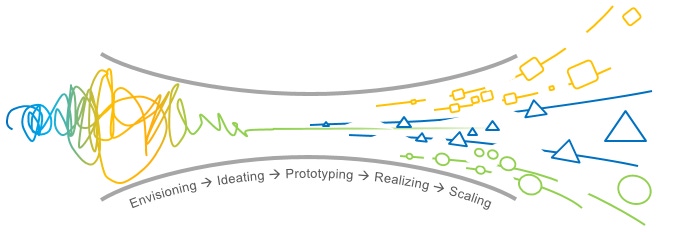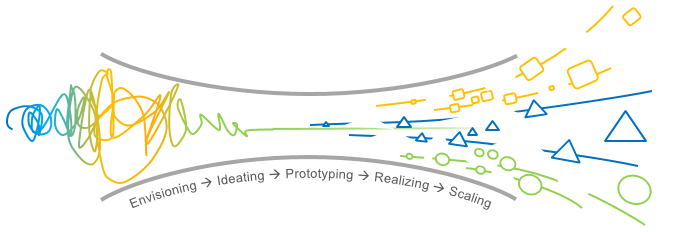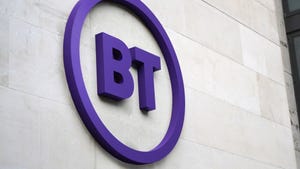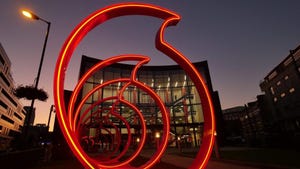August 24, 2018

By Derry Li, President of Business and Network Consulting, Huawei
Since the development of the telecom industry, both business development, operation mode innovation, and network architecture evolution have driven digital transformation into the strategic direction of operators. Many leading operators have carried out useful exploration and practice in the digital transformation field, however, there are common difficulties and constraints:
If you are a CEO, how do you establish a unified transformation vision and a consistent understanding of top-level design at all levels of the organization? During the design of transformation objectives, journey, and path, can you get a feasibility argument for a class of issues like “What is the to-be of digital transformation?” “Can we achieve the expected effect?” “Can you succeed in doing so?”
If you are a Chief Digital Transformation Officer, you may have some problems: In the telecom industry, traditional planning, investment, construction, O&M, and user connection modes have great inertia. In the implementation and operation of transformation programs, participants cannot adopt new thinking and new modes to adapt to the uncertainties and continuous changes of digital transformation. Furthermore, before taking a radical global transformation, there is no cross-functional team to conduct some transformation tests with some new models and methods. In addition, there is a lack of complete vision to guide the restructuring of organizations and capabilities required for transformation.
If you are a CTIO, you need to think about how to make sure that you can master the existing resources (user, network, IT, data, channel, and ecosystem) and execute different operation activities of different departments. Under the Production & Operation environment and KPI system of each different department, how to overcome many realistic pressures and limitations, avoid cognitive deviation or slow action in some phases that will block the whole transformation process, reduce the time cost of transformation, and reduce the cost of correction.
If you are a CMO, how can your team quickly explore and develop digital product and service experience that users love and willing to spend more budget and time in addition to SIM Card, bandwidth, and traffic? What are the major changes and how to reconstruct the market operation and user value management system? How to reduce the cost of trial and error and shorten the exploration period? How to build a new value generation and value acquisition model under the new ecosystem?
In view of these difficulties and constraints, operators, vendors, and ecosystem partners need an environment for transformation exploration and search solution to solve problems, a full-function team that focuses on transformation focuses, a new set of agile operation mode and a “Roman square” for each industry to jointly cultivate the transformation atmosphere.
Huawei has established an Open Roads Community (OPRC) with leading operators and industry researchers who have a common vision and goal in digital transformation. The OPRC has been established to carry out innovation and development research with digital transformation as the core. At the same time, Huawei has built the Digital Transformation Practice Center to carry out the implementation of the OPRC digital transformation theory framework system, and use the new attempts of “agile practice & innovation environment” + “full-function team operation towards transformation focus” + ” agile operation mode of user -product – offering -service – collaboration between resources and operation activities” to explore the practice of digital transformation and build capabilities with operators.

Figure: DTPC process
DTPC provides operators with a digital transformation practice and innovation environment, and establishes a full-function team consisting of Huawei, operators (cross-organization roles), and end users as well as third-party partners involved in some phases, which flexibly invoke key roles such as market analysis, customer experience design, customer journey management, product design, service design, technology and architecture design, operation and maintenance design, business model and value design, and ecosystem construction based on different scenarios. In the Huawei DTPC practice environment, the full-function team will aim at one or several transformation focuses and experience five phases including Envisioning-Ideating-Prototyping-Realizing-Scaling, helping operators to carry out digital transformation in an orderly manner.
Operators’ digital transformation requires a unified digital vision from top to bottom.
The DTPC full-function team has the following tasks in the Envisioning phase:
Deeply understand the digital strategy and driving force of transformation. Study the local telecom market, user experience/journey management, and local digital ecosystem by combining Outside-in and Inside-out. Investigate the perception and requirements of operators from senior management to key staff.
Identify the key gaps in operators’ most likely acquisition of industry development opportunities and development of digital capabilities, drive operators’ departments to align their digital vision and strategic goals, lock the focus of phase transformation, and jointly develop digital transformation maps, key initiatives, and implementation plans.
Effectively integrate operators’ network assets, user assets, data assets, and ecological resources, and explore how to carry out operation and O&M evolution and innovation, develop new digital products, and implement operations. For example: 2B service provisioning and provisioning improvement, IoT application and ecosystem, new value-added services, and future 5G industry applications, and exploration practices in reshaping customer journey, experience, interaction mode, and user value management.
The DTPC full-function team has the following tasks in the Ideating phase:
Based on the digital transformation map of operators, identify industry opportunities, stimulate new O&M improvement and innovation, develop new digital product and offering ideas, and identify key transformation elements and dependencies.
Prioritize transformation key elements from three dimensions: scenario-based customer requirements, business feasibility, and technical feasibility, so as to reconstruct the enjoyable brand-new customer experience journey and Service Blueprints. The representatives of multiple participants in the functional team work closely with each other to explore and define customer requirements, and obtain in-depth understanding and recognition of service blueprints between operators’ internal parties, operators and partners to find the possibility and feasibility of the value creation and value acquisition of multiple parties in the ecosystem.
Assist operators in designing and evaluating financial indicators for service blueprints, align with operators’ executives’ digital transformation value leverage and ROI expectations, re-prioritize service blueprints, and finally identify service blueprints with high success opportunities and potential value as the highest priority, then output the Operator digital transformation roadmap.
Identify transformation focuses with high success opportunities and potential value, and digital products and offerings. Identify the feasible way to improve the operation and maintenance efficiency, and then quickly promote prototype verification and confirmation.
The DTPC full-function team has the following tasks in the Prototyping phase:
Based on the output of the previous phase, use new technologies and capabilities to develop the MDE (Minimum Desirable Experience) and MVP (Minimum Viable Product), design the enjoyable customer journey, business scenario, corresponding business architecture/business flow, data architecture/data flow, matching operation/O&M mode design, and data collection and analysis/application mode, operation indicators and O&M indicators.
Implement visualized MDE/MVP orchestration and fast prototype iteration.
In the operation process, based on data/models and lightweight service orchestration, the contact points of the customer interface are integrated to implement unified customer experience management and support quick production and launch of digital products and offerings.
Integrate Operators’ resource asset elements, use model driving and orchestration technologies to invoke and orchestrate policy design and rule formulation for resources and capabilities required by products and offerings, and practice automatic service provisioning, automatic resource deployment, and self-recovery O&M at the service and resource layers, as well as practice data governance and analysis to implement data-driven operation.
Each prototype verification and iteration ensures the availability of the prototype, meets the scenario value and enjoyable user experience, and continuously reviews the feasibility of the association between the solution and financial perspectives.
The DTPC full-function team has the following tasks in the Realizing phase:
Evaluate the impact of MDE/MVP implementation on the network and output network evolution suggestions.
Evaluate the connection between the MDE/MVP implementation and the existing business processes of the operator, the relationship and integration requirements between the MVP and peripheral systems as well as the impact on the organization architecture, and requirements on personnel skills. Then provide suggestions on implementation deployment, operation and O&M process optimization, ecosystem construction, and personnel skill improvement.
The simulation by combining the local business and operation environment elements is the pre-requisite to further consider large-scale deployment.
The DTPC full-function team has the following tasks in the Scaling phase:
Identify the profile of the seed user and prepare the matching conditions required for the simulation.
Perform small-scale POC verification and effect evaluation on the DTPC practice in the actual production and operation environment of operators.
In each round of practice in DTPC, the “complex” digital transformation strategy blueprint of operators is divided into multiple “small cycle” iterations to realize low cost trial and error. In the joint practice to achieve “Know-How” and realize small step and quick win and more readiness for scale investment in the unified strategy of digital transformation.
The journey in DTPC that your team and we mutually go through is the process of transformation mode conversion, the process of capability growth, and the process of new business opportunity incubation.
The original transformation with large investment and long cycle has a considerable degree of uncertainty, which often costs tens of millions of dollars and several years of time window. Now, Huawei uses the DTPC full-function team to build a “small cycle iteration” mode with agile, short cycle, less cost, and pre-verification to achieve customer expectations and use practical and innovative attitude to assist digital transformation.
Read more about:
Vendor SpotlightsYou May Also Like






.png?width=300&auto=webp&quality=80&disable=upscale)


_1.jpg?width=300&auto=webp&quality=80&disable=upscale)


.png?width=800&auto=webp&quality=80&disable=upscale)